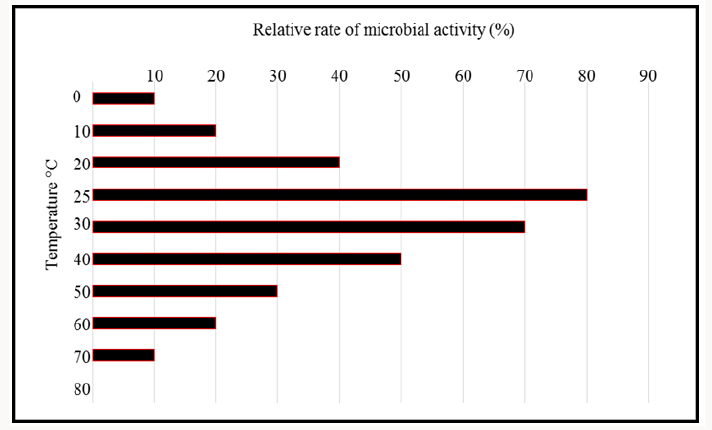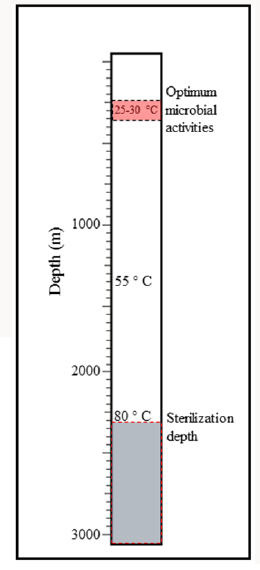
Lupine Publishers Group
Lupine Publishers
Menu
ISSN: 2637-6652
Mini Review(ISSN: 2637-6652) 
Controls on the Prevalent Occurrence of Cretaceous Oil Sands Volume 1 - Issue 3
Timothy Bata1*, Ezekiel H Elijah2, John Jitong Shirputda3 and Titus Adinye1
- 1Department of Applied Geology, Abubakar Tafawa Balewa University, Nigeria
- 2National Productivity Center Bauchi, Nigeria
- 3National Centre for Petroleum Research and Development, ATBU, Nigeria
Received: April 11, 2018; Published: April 25, 2018
Corresponding author: Timothy P Bata, Associate Professor of Petroleum Geology, Abubakar Tafawa Balewa University, Bauchi, Nigeria
DOI: 10.32474/MAOPS.2018.01.000114
Abstract
The widespread occurrence of Cretaceous oil sands can be attributed to various geological processes, most of which can be linked to the warm climatic conditions that prevailed globally at that time. The extreme global warmth witnessed during the Cetaceous caused a rise in global sea level, which resulted in flooding of most continental margins, depositing transgressive sands at shallow depths directly on the Precambrian basement, or much older sedimentary strata. Another important geological factor that contributed to the widespread occurrence of the Cretaceous oil sands was the availability of viable petroleum source rocks that generated oils at the time of, or shortly after, the Cretaceous oil sands were deposited. Oils migrated into the shallow Cretaceous reservoir sands through the plane of unconformity underlying them. The warm climatic conditions witnessed in the Cretaceous also implied that the reservoir had conditions that were favourable for optimum microbial activities.
Introduction
Important geological factor controlling the widespread occurrence of these Cretaceous oil sands is the prevalence of Cretaceous reservoir sands with good reservoir capabilities. Deposition of these reservoir sands can be linked to the marine transgression that occurred during the Cretaceous period which was caused by the unique greenhouse climatic condition witnessed in the Cretaceous. This extreme global warmth was a direct consequence of the high level of atmospheric CO2 that prevailed globally at that time [1-3]. Variations in global climatic conditions are an important influence on variations in the global sea level. When global temperatures rise, the volume of seawater increases, as polar ice caps melt. Conversely, when global temperatures fall, polar ice caps grow and the volume of seawater decreases, causing the global sea level to fall. An increase in the rate of sea-floor spreading during the Cretaceous continental break-up also resulted in a decrease in the volume of ocean basins as hot rising magma caused the lithosphere to be lifted along the mid-ocean ridges, resulting in the reduction of the volume of the ocean basins. This combination of warm climatic conditions and sea-floor spreading resulted in a significant rise in the global sea level in the Cretaceous, causing flooding of most of the continental margins by the oceans [3,4].
Another important geological factor that contributed to the widespread occurrence of the Cretaceous oil sands was the availability of viable petroleum source rocks that generated oils at the time of, or shortly after, the Cretaceous oil sands were deposited. The Cretaceous period is known to be closely associated with organic-rich sediments (petroleum source rocks) that were deposited during the various widespread Cretaceous anoxic events e.g: [5,6]. Oils generated from these organic-rich sediments (source rocks) could easily migrate into the Cretaceous transgressive sands through the underlying plane of unconformity. There is field evidence showing cases of hydrocarbon migration over hundreds of kilometres through the plane of unconformity underlying the Cretaceous transgressive sands. An example is the heavy oil occurring in the Athabasca oil sand which is believed to have been partly derived from shale source rocks several hundred kilometres away from the reservoir sand [7,8].
Temperature is known to have a significant effect on the activities of microbes that are capable of degrading oils e.g. [3,9,10]. The temperature range in a petroleum reservoir will determine what type of microorganisms can thrive in the reservoir, while the specific temperature within the range will affect the rate of microbial activities. Microorganisms are often classified according to their optimal temperature range. Psychrophilic microorganisms commonly thrive in environments with temperatures ranging between 0 °C and 20 °C. Mesophilic microorganisms commonly thrive in environments with temperatures ranging between 20 °C and 40 °C, while thermophilic microorganisms commonly thrive in environments with temperatures ranging between 40 °C and 80 °C [11]. 80 °C is considered as the sterilization temperature for most microorganisms, beyond which only hyperthermophilic microorganisms can thrive e.g. [12].
Microorganisms, therefore, have an optimum temperature at which they are most efficient. The further from this temperature a petroleum reservoir strays, the less productive the microorganisms in it will be. An accepted rule of thumb is that the rate of biodegradation at least doubles for every 10 °C increase [11], (Figure 1). The optimum temperature for microbial activity is between 25 °C and 30 °C e.g. [13], which is in fact very similar to the estimated average global surface temperature of 28 °C witnessed during the Cretaceous [1,2].
Figure 1: Chart showing variation in the relative rate of microbial activity with temperature. Note the optimum temperature for microbial activity is between 25 °C and 30 °C after which microbial activities decline down to the sterilization temperature at 80 °C.

Figure 2: Effect of variation in temperature with depth on microbial activities. Note that optimum microbial activities occur at a depth of about 300 m.

Measurements of microbial cell densities in aquifer systems carried out by [14] revealed a significant decrease in microbial cell densities with depth, suggesting relative increase in microbial activities at shallow depths similar to the depth of occurrence of most Cretaceous oil sands. Assuming a normal geothermal gradient of about 25 °C/km for the present day, optimum microbial activity will be expected to occur at a depth of about 300 m, after which microbial activity begins to decline until it gets to the sterilization depth of about 2300 m where most microbial activities cease (Figure 2).
References
- Skelton PW, Robert A Spicer, Simon P Kelley, Iain Gilmour (2003) The Cretaceous world. Cambridge University Press, London.
- Wang Y, Huang C, Sun B, Quan C, Wu J, et al. (2014) Paleo-CO2 variation trends and the Cretaceous greenhouse climate. Earth-Science Reviews 129: 136-147.
- Bata T (2016) Geochemical Consequences of Cretaceous Sea Level Rise. Unpublished PhD thesis submitted to the Department of Geology and Petroleum Geology, University of Aberdeen.
- Coe MT, Costa MH, Botta AL, Birkett C (2002) Long-term simulations of discharge and floods in the Amazon Basin.
- Erba E (2004) Calcareous nannofossils and Mesozoic oceanic anoxic events. Marine Micropaleontology 52(1-4): 85-106.
- Jenkyns HC (2010) Geochemistry of oceanic anoxic events. Geochemistry, Geophysics, Geosystems 11(3): 1-30.
- Head IM, Jones DM, Larter SR (2003) Biological activity in the deep subsurface and the origin of heavy oil. Nature 426: 344-352.
- Larter SR, Head IM, Bennett B, Huang H, Adams JJ, et al. (2013) The roles of water in subsurface petroleum biodegradation-Part 1. The role of water radiolysis. Geo Convention 2013: Integration.
- Peters KE, Walters CC, Moldowan JM (2005) The Biomarker Guide: Biomarkers and isotopes in petroleum exploration and Earth history, v. 2. Cambridge, Cambridge University Press, USA.
- Tripathi V, Abhilash PC, Singh HB, Singh N, Patra DD, (2015) Effect of temperature variation on lindane dissipation and microbial activity in soil. Ecological Engineering 79: 54-59.
- Dettmer K (2002) A discussion of the effects of thermal remediation treatments on microbial degradation processes. National Network of Environmental Management Studies Fellow. Washington DC, USA.
- Adams J, Steve L, Barry B, Haiping H, Joseph W, et al. (2013) The dynamic interplay of oil mixing, charge timing, and biodegradation in forming the Alberta oil sands: Insights from geologic modeling and biogeochemistry 64: 23-102.
- Pietikäinen J, Pettersson M, Bååth E (2005) Comparison of temperature effects on soil respiration and bacterial and fungal growth rates. FEMS Microbiology Ecology 52(1): 49-58.
- McMahon S, Parnell J (2014) Weighing the deep continental biosphere. FEMS microbiology ecology 87(1): 113-120.

Top Editors
-

Mark E Smith
Bio chemistry
University of Texas Medical Branch, USA -

Lawrence A Presley
Department of Criminal Justice
Liberty University, USA -

Thomas W Miller
Department of Psychiatry
University of Kentucky, USA -

Gjumrakch Aliev
Department of Medicine
Gally International Biomedical Research & Consulting LLC, USA -

Christopher Bryant
Department of Urbanisation and Agricultural
Montreal university, USA -

Robert William Frare
Oral & Maxillofacial Pathology
New York University, USA -

Rudolph Modesto Navari
Gastroenterology and Hepatology
University of Alabama, UK -

Andrew Hague
Department of Medicine
Universities of Bradford, UK -

George Gregory Buttigieg
Maltese College of Obstetrics and Gynaecology, Europe -

Chen-Hsiung Yeh
Oncology
Circulogene Theranostics, England -
.png)
Emilio Bucio-Carrillo
Radiation Chemistry
National University of Mexico, USA -
.jpg)
Casey J Grenier
Analytical Chemistry
Wentworth Institute of Technology, USA -
Hany Atalah
Minimally Invasive Surgery
Mercer University school of Medicine, USA -

Abu-Hussein Muhamad
Pediatric Dentistry
University of Athens , Greece

The annual scholar awards from Lupine Publishers honor a selected number Read More...














